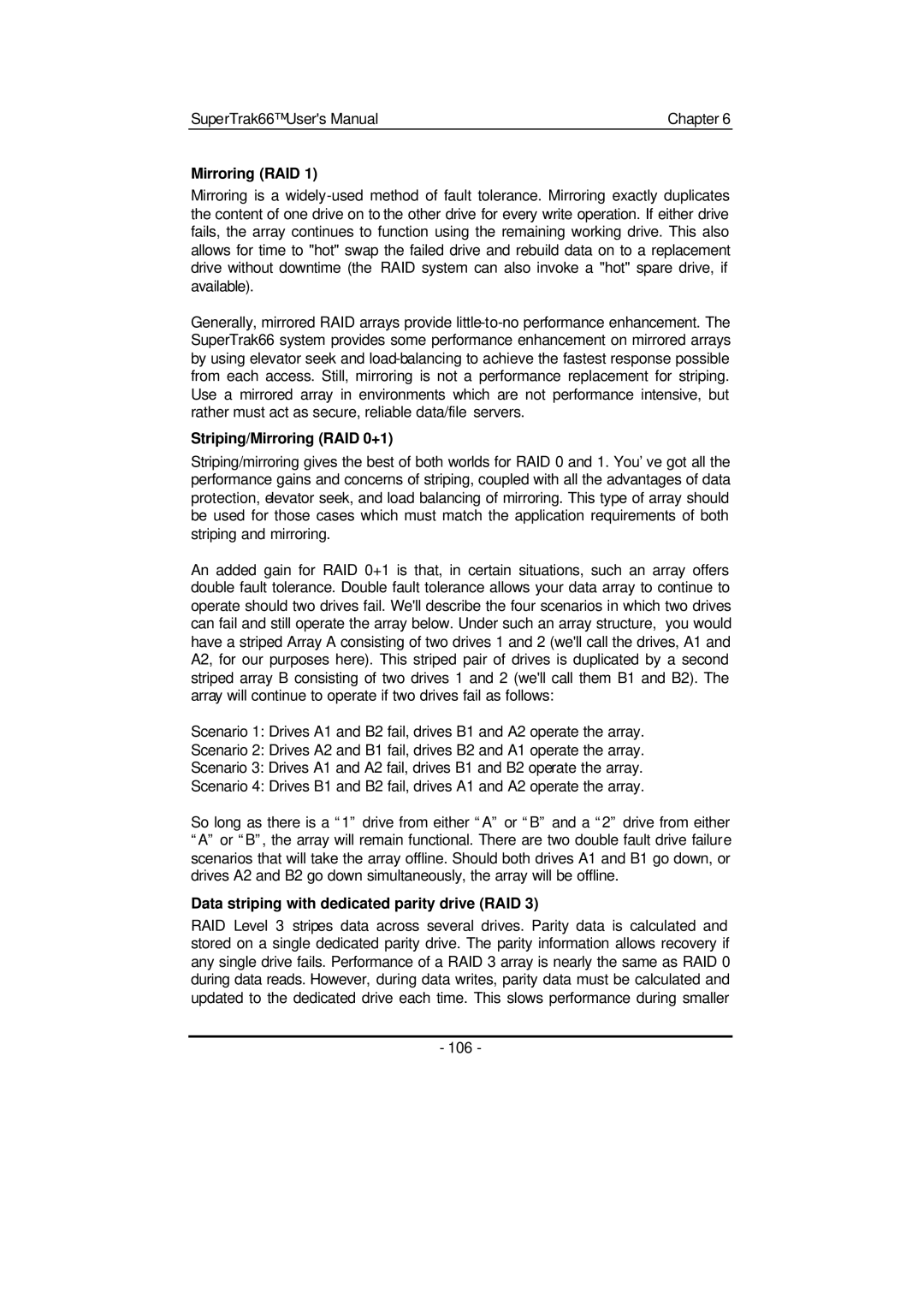SuperTrak66™ User's Manual | Chapter 6 |
Mirroring (RAID 1)
Mirroring is a
Generally, mirrored RAID arrays provide
Striping/Mirroring (RAID 0+1)
Striping/mirroring gives the best of both worlds for RAID 0 and 1. You’ve got all the performance gains and concerns of striping, coupled with all the advantages of data protection, elevator seek, and load balancing of mirroring. This type of array should be used for those cases which must match the application requirements of both striping and mirroring.
An added gain for RAID 0+1 is that, in certain situations, such an array offers double fault tolerance. Double fault tolerance allows your data array to continue to operate should two drives fail. We'll describe the four scenarios in which two drives can fail and still operate the array below. Under such an array structure, you would have a striped Array A consisting of two drives 1 and 2 (we'll call the drives, A1 and A2, for our purposes here). This striped pair of drives is duplicated by a second striped array B consisting of two drives 1 and 2 (we'll call them B1 and B2). The array will continue to operate if two drives fail as follows:
Scenario 1: Drives A1 and B2 fail, drives B1 and A2 operate the array.
Scenario 2: Drives A2 and B1 fail, drives B2 and A1 operate the array.
Scenario 3: Drives A1 and A2 fail, drives B1 and B2 operate the array.
Scenario 4: Drives B1 and B2 fail, drives A1 and A2 operate the array.
So long as there is a “1” drive from either “A” or “B” and a “2” drive from either “A” or “B”, the array will remain functional. There are two double fault drive failure scenarios that will take the array offline. Should both drives A1 and B1 go down, or drives A2 and B2 go down simultaneously, the array will be offline.
Data striping with dedicated parity drive (RAID 3)
RAID Level 3 stripes data across several drives. Parity data is calculated and stored on a single dedicated parity drive. The parity information allows recovery if any single drive fails. Performance of a RAID 3 array is nearly the same as RAID 0 during data reads. However, during data writes, parity data must be calculated and updated to the dedicated drive each time. This slows performance during smaller
- 106 -
